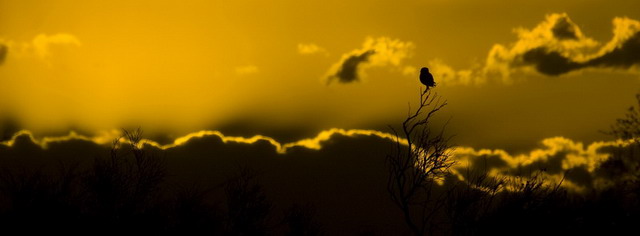Back in Barcelona, but catching up with all the editing and processing of pics, so I’ll be making a few more SA entries. When going out to do night work (to catch, measure, and band the chats roosting in their holes underground) you’d always come across something interesting. Like this scorpion. It’s hard to capture the colour correctly, but that’s what they look like under UV light.
Ya estoy de vuelta en Barcelona, pero aun me quedan muchas fotos por editar y procesar, así que haré algunas entradas más en el blog. Cuando trabajábamos de noche (para capturar, medir y anillar a los zorzales que dormían en sus túneles) siempre encontrabas alguna u otra cosa interesante. Como este escorpión. Es difícil plasmar el color, pero así se ven bajo luz UV.
 Or this bubbling kassina which just bloated itself when I picked it up.
Or this bubbling kassina which just bloated itself when I picked it up.
O esta ranita (Kassina senegalensis) que se infló al ser recogida.
This is an unsocial south african hedgehog.
Un erizo sudafricano siendo asocial.
But after a while he decided we were harmless.
Que luego decidió que eramos inofensivos.
Snakes were what I looked forward to most at nights. This is a brown house snake. Truth is I did quite well with snakes: saw and handled 10 species in the two and a bit months I was in SA.
Las serpientes eran lo que más buscaba. Ésta es una serpiente de casa africana. La verdad es que tuve bastante suerte: en dos meses y pico vi y manipulé 10 especies diferentes.
One of the highlights of night work (and one of the things I miss most) was sitting on top of the car, spotlighting for eyeshine in the hopes of seeing some of the rare night mammals.
Lo mejor de las noches era ir sentado encima del coche, con un foco buscando el brillo de los ojos que delatara a alguno de los mamíferos nocturnos más difíciles de ver.
An aardwolf. This one is radiotagged. I know. Lousy pic. But I only took the camera once when I went tracking and was only starting to get the hang of it. Maybe next time...
Un lobo de tierra. Éste tiene collar para seguimiento. Lo sé. Foto mala. Pero sólo me lleve la cámara una vez cuando fuimos a seguirlos y apenas comenzaba a pillarle el truco. Quizás la próxima vez…

A nice little gecko.
Electrical storms were also common, and quite spectacular to watch.
Las tormentas también eran bastante frecuentes. Y espectaculares.
And this is Rudiger, my pet. You could see solifuges during the day, but the larger ones, like this one (6-
Y éste es Rudiger, mi mascota. Los solífugos se veían también durante el día, pero los grandes, como éste (6-
So I turned to an easier species. This is Larry, a striped field mouse. They’re incredible. You’d see them scuttling through the veld at night. But when you caught them they were tame as if they’d been born in captivity. After 10 seconds in your hand they’d start washing and then walk up your arm to your shoulder.
Así que me busqué algo más fácil. Éste es Larry, un ratón de campo. Son muy mansos. Los ves corriendo por el campo de noche, pero al cogerlos no intentan escapar y enseguida se empiezan a limpiar y luego a escalar por tu brazo hasta el hombro.



















































